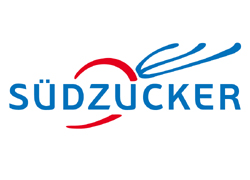VIPsight International
VIPsight America - Mexico
31 January 2014
Martín Dâvila
Mergers and Acquisitions in the Mexican Banking System
In addition to labor markets and legal system that each country has, the theory of Corporate Governance mentions that mergers and acquisitions, best known for M&A by the acronym in English, represent another of the external mechanisms of control.
It is called Merger to the union of two or more firms which were legally separated and that from the merger will form a new society. The literature mentions several forms of mergers, however in consensus we could say that there are two types of mergers, one of them is called Pure Merger, which is formed when two or more firms join to form a new, which dissolve but are not settled, this is, the companies dissolve simultaneously to form a company formed by the assets of them, through the allocation of shares of the company resulting to the shareholders of the dissolved. The dissolution of the merged companies, if prior to the formation of the new company, can be arranged under the suspensive condition of the merger. The other type of merger is a Merger by Absorption that is when one of them absorbs the heritage of the remaining, in this case also dissolve but are not settled, this is, troop-contributing its assets to another already formed and with which they form a single body. The absorbent company has increased its capital through the creation of actions that attach to the shareholders of the companies annexed, in representation of the contributions made to the merger.
The main features that are presented in a merger are: 1) the dissolution of the company absorbed that disappears, 2) the transmission of the universality of the assets of the company being acquired to the acquiring company, 3) the shareholders of the company being acquired are transformed into partners of the acquiring company, 4) mergers are operations is usually practiced in periods of economic expansion or crisis, 5) the transfer of all the assets and liabilities of the acquired companies to acquiring companies or companies to merge to the new company, 6) the dissolution without liquidation of the acquired companies to merge, 7) in the immediate attribution to the shareholders or the companies being acquired or of the merging societies of shares of the acquiring company or of the new society.
Finally the mergers are mainly for the following reasons: a) the synergy, b) the tax considerations, c) the purchase of assets below their cost of replacing, d) the diversification, e) obtaining the control on a larger company.
On the other hand we will called Acquisition when a firm purchases all the shares of another or other businesses without merge their assets, it is a direct negotiation, in which a company buys the assets or shares of the other and in which the shareholders of the acquired company are no longer the owners of the same. As with the mergers, there are several types of acquisitions, the main forms are: Consolidation, it is a situation very similar to a merger except for the fact that it creates a completely new firm, because both the acquiring and acquired finish their previous legal existence and become part of the new company. In a consolidation, the distinction between the company that makes the acquisition and the company that is acquired is not of importance; however, the rules that apply are basically the same as mergers. Also, in both cases, the acquisitions result in various combinations of the assets and liabilities of the two companies. Acquisition of Shares, consists in buying the shares entitled to vote by delivering to change cash, equity and other values. The purchase procedure usually begins with a private offering affected by the management of a company to another. The offer is communicated to the shareholders of the company fixed as acquisition target by means of public announcements, such as the posting of notices in the newspapers. Acquisition of assets, these acquisitions involve the transfer of property titles. The procedures can be costly. A company can acquire another company by buying all of its assets and this will require the formal vote of the shareholders of the vendor company. Merger by incorporation, is when two or more existing institutions come together to constitute an institution of new creation, causing the extinction of the legal personality of the incorporated institutions and transmission to Universal title of their heritage to the new society.
In the case of acquisitions will have some advantages that are important to consider these can be a significant decrease in the cost of operation and/or production, due to the reduced staff, at the same time, it can eliminate the rivalry and the fair and unfair competition that prevents them from having a greater economic power and the realization of higher profits, you can reach to have greater profitability, because the instruments of production are more conveniently used when they are managed under a single management or are concentrated in the same space, consequently reducing the costs, therefore the company absorbent becomes a stronger society, with enjoy greater commercial credit, since it is now they can ensure an administration more methodical and a more centralized control.
However, some acquisitions may generate risks and inconveniences, especially when it is merged companies with low or zero operability with respect to signatures and highly efficient active, as they may increase the difficulties or previous distortions rather than being reduced. All of the above can trigger difficulties with an acquisition poorly handled in such a way that could cause an imminent bankruptcy for the company that is being formed on the basis of such acquisition. Because of this, they should be very careful when performing a proposed acquisition by some companies.
The theory of Corporate Governance takes into account the M&A as a mechanism of external control because usually if a firm is to submit an administrative mismanagement on the part of their managers and therefore begins to generate less wealth, that is, fewer jobs, sales, profits fall as well as a decrease in the quality of the product/service, causing that the firm is a perfect target for companies who are looking for M&A, so what suits them to the directors, it is the alignment of the objectives pursued by the company as a whole and not only by the search of the personal benefits of their managers.
This situation was presented in Mexico in the banking system after the financial crisis of late 1994, in which the majority of Mexican banks showed signs of unavoidable declines in their yields, due to the non-performing loan portfolio in the shells that made unsustainable their lending operations in such a way that many of the banks were on the verge of bankruptcy. The nonperforming loans was generated by the high interest rates that were induced by both inflation and macroeconomic policy of the government of that time, in addition to the accelerated expansion of credit to the private sector that took place between the years 1988 and 1994. The new bankers who began on at that time made clear his inexperience in the bouquet as well as their ignorance in the measurement of the risks on the credits that were giving and as if that were not enough, there were significant weaknesses in the control and supervision by the regulatory authorities of the banking portfolio.
The only feasible way they saw the Mexican banks in early 1995 was through mergers and acquisitions, so that in May of 1995 it began the new makeup of the Mexican banking system with the merger of the Multibanco Mercantil Probursa merged by part of the Spanish bank Banco Bilbao Viscaya, for November 1995, the Banco del Centro merged with Banco Mercantil del Norte. There not just this situation, indeed that is the beginning of a series of mergers and acquisitions that I’ll show below:
I. June 1996, Banoro is acquired by the Banco Mercantil del Norte.
II. July 1996, Inverlat is associated with Scotiabank.
III. August 1996, Banca Cremi and the Banco de Oriente are acquired by the Banco Bilbao Viscaya.
IV. March 1997, Banca Serfín is associated con HSBC.
V. May 1997, the Banco Mexicano merged with the Banco Santander.
VI. August 1997, Banca Confía is acquired by Citibank.
VII. August 1997, Banpaís is acquired by the Banco Mercantil del Norte.
VIII. December 1997, the Banco del Atlántico, the Banco del Sureste, and the Banco Interestatal are acquired by the Banco Internacional (Bital).
IX. June 1999, Banca Promex and Banca Unión are acquired by Bancomer.
X. April 2000, Banca Serfín merged with the banco Santander Mexicano.
XI. October 2000, Bancomer merged with the Banco Bilbao Viscaya.
XII. November 2000, Inverlat merged with Scotiabank.
XIII. October 2001, Banamex merged with Citibank.
XIV. November 2001, Bancrecer merged with the Banco Mercantil del Norte.
Both the revolution in information technologies such as the globalization have resulted in the expansion of the markets as well as the decrease in production and marketing costs by what many economic sectors, such as the Mexican banking system, have been restructured. Mergers and acquisitions have been strategic instruments by which firms have carried out the restructuring that need to increase their sizes and accelerated significantly, which has represented an increase in their economies of scale and scope with which increase their yields and participation in their respective economic sectors. It generates a challenge for public policy in the sense of allowing corporate restructuring necessary but at the same time the protection of a fair competition between companies. There is still to wait a reasonable time to verify that the mergers and acquisitions in the banking sector is going to be beneficial to Mexico, will be that these strategies will generate a sustained economic growth and accelerated in spite of the financial reform that has promoted the current Mexican government? We will have to see…
VIPsight Europe - Italy
2 February 2014
Sergio Carbonara
Fiat-Chrysler
It is amazing how Fiat-Chrysler has been free to choose one domicile for every need: the headquarter in the Netherlands (so that Agnelli family will be able to control the company with less than 30%, thanks to the special voting shares), the fiscal domicile in the UK to pay less taxes on dividends, the listing in the US and Italy where the brand is more recognized, the factories around the world. Also the acronym changed, from FIAT (Fabbrica Italiana Automobili Torino) to FCA, gradually eliminating any reference to Italy. But they still have big problems with operating results (profits from ordinary activities went down by 4% in 2013) and increasing net debt (€ 11.4 billion in the third quarter 2013, versus € 9.4 billion in the same period of 2012). The company also stated that no dividends will be paid in 2014, for the third year in a row. Hopefully, now that Mr. Marchionne’s dream came true, they will go back to make cars…















